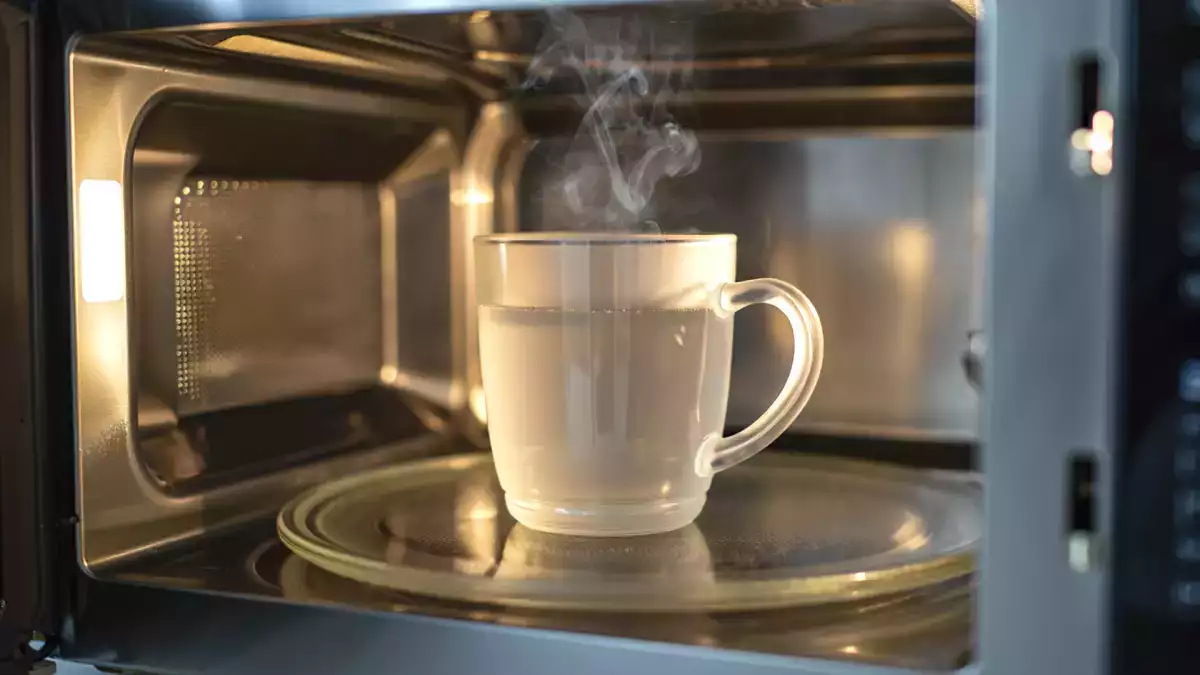Think microwaving a glass of water is harmless? One tiny mistake can turn it into a boiling hazard

A cup of water in the microwave, a minute's wait, and the morning routine seems to be solved. But all it takes is a simple movement, a teaspoon, a tea bag, and the liquid bursts and splashes with force. What was supposed to be a harmless gesture can end in an unexpected burn. It happens in seconds, without warning, and leaves anyone wondering what has gone wrong with such an everyday occurrence. Why does it happen and how to avoid it? The answer lies within the microwave itself.
A routine gesture that hides a risk
Almost all of us do it: heat up a glass of water, some milk or the coffee left over from breakfast, perhaps out of pure habit. Every now and then, something goes wrong. There are no bubbles, it doesn't boil, everything seems normal... until the water suddenly jumps. It's not an urban legend: the explanation lies in physics, not superstition.
Manufacturers warn about it in their manuals, but the warning often goes unnoticed. On the surface, heating a cup of water seems innocuous. In reality, it is one of the few everyday gestures that can become dangerous if not done carefully.
The phenomenon of overheating
So-called microwave overheating occurs when water is heated unevenly. In contrast to fire, which transmits heat from the base of the container, the microwave acts directly on the water molecules throughout its volume.
Under these conditions, the liquid can reach more than 210°F/100°C without boiling. No bubbles or visible steam are formed, and the water appears calm. But it is enough to introduce a teaspoon or a tea bag for the accumulated energy to be suddenly released and the water jumps violently.
A rare phenomenon, but perfectly documented.
Why does it occur especially with water
The risk is greater with pure water, without impurities, because nothing interrupts the heating process or facilitates the formation of bubbles. On the other hand, liquids such as milk or coffee contain proteins, fats and small particles in suspension that help to disperse the heat, stabilize the temperature and reduce the risk, although they do not eliminate it completely.
The container also has an influence: new or very smooth cups facilitate overheating, while a used cup, with slight roughness or even a minimal interior mark, offers natural points where steam can be released gradually and safely.
The real risk: severe burns
The FDA (U.S. Food and Drug Administration) warns that heating water in the microwave without precautions can cause overheating and dangerous splashing. Although this is a rare accident, the burns can be serious and affect the hands, face or respiratory tract.
The risk comes not only from the liquid: the container itself can reach higher temperatures than expected and cause burns when touched.
It is not a matter of alarm, but of understanding how the appliance works. The microwave is safe, but with liquids, its speed can become its biggest trap.
How to heat liquids safely
There is no need to give up the microwave, but use it with caution. Here are some simple guidelines that greatly reduce the risks associated with overheating liquids in the microwave:
- Insert a wooden stick or a glass rod in the glass before heating: they help to release the steam little by little.
- Use medium powers and short times (20-30 s), stirring between pauses.
- Do not cover the vessel completely or fill it to the brim.
- Wait a few seconds before stirring or drinking.
As a guideline, a 250 ml glass should not be heated for more than one minute at 700-800 W, always in two or three batches.
If there is time, the traditional method remains the most stable: a saucepan or a kettle allows to control the moment of boiling and to adjust the temperature with precision, about 165-175°F/75-80°C are perfect for a green tea.
Patience and common sense
Avoiding an accident is as simple as heating in batches, stirring and letting it stand for a few seconds. A minimal gesture can prevent a serious burn.
Have you ever seen water "jumping" out of the microwave? Do you prefer the calm of the kettle or do you still rely on the speed of the microwave?
 Patricia González
Patricia González
Comments